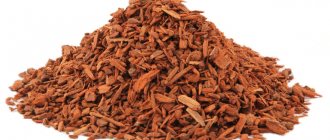Composition and release form
| Soluble tablets | 1 table |
| amoxicillin (as amoxicillin trihydrate) | 125 mg |
| 250 mg | |
| 500 mg | |
| 1000 mg | |
| excipients: dispersible cellulose; MCC; crospovidone; vanillin; tangerine flavor; lemon flavoring; saccharin; magnesium stearate |
5 pcs in blister; there are 4 blisters in a box (125, 250, 500, 1000 mg) or 7 pcs in a blister; There are 2 blisters in a box (125 mg).
Comparison of Flemoxin and Amoxicillin
Amoxicillin is a precursor to many modern antibiotics. The drug has been on the market for more than 50 years; during this period, many pharmaceutical companies have established its production:
- Bayer - Germany;
- World Pharmaceutical - USA;
- Natur Product - Netherlands;
- Serena Pharma - India;
- Hemofarm - Yugoslavia;
- Biopreparat, Biokhimik, Bryntsalov-A, Vertex, Pharmasintez, etc. - Russia.
It itself has a number of shortcomings, which were corrected with the advent of the generic Flemoxin Solutab, which has been produced by Astellas Pharma Corporation (Netherlands) since 2005.
Similarities
The action of these antibiotics is based on the capabilities of their common active component - amoxicillin trihydrate. Both products are derivatives of penicillin group compounds that act on pathogenic flora in the same way - destroying bacteria by penetrating the membrane. Indications for use cover infectious diseases:
- leptospirosis;
- endocarditis;
- sinusitis;
- bronchitis;
- pharyngitis;
- tonsillitis;
- otitis;
- pneumonia;
- kidney and genitourinary tract infections;
- inflammation in gynecology;
- skin infections (dermatosis, erysipelas);
- stomach ulcer.
Contraindications:
- penicillin intolerance;
- lymphocytic leukemia;
- asthma;
- colitis;
- severe kidney disease.
Side effects that occur with hypersensitivity and overdose:
- anemia;
- candidiasis;
- thrombocytopenia;
- nephritis;
- stomatitis;
- sleep and appetite disturbances;
- confusion;
- leukopenia;
- allergic manifestations (including angioedema);
- gastrointestinal disorders;
- convulsions.
What is the difference
The main difference between these drugs is that Flemoxin is produced in the form of highly soluble and at the same time acid-resistant forms. The active component, entering the stomach, does not disintegrate under the influence of hydrochloric acid, but passes into the intestines, where it is absorbed by more than 90% of the blood. This allows the antibiotic agent to freely penetrate into the deepest foci of infection in the required dosages.
Amoxicillin has a completely different composition structure, so it begins to break down in the stomach, which is why it is not fully absorbed. But the old and time-tested drug copes better with inflammation of the gastrointestinal microflora. Taking medications together is not practiced (after all, they are the same thing); a double dose will exceed the norm, which is dangerous due to adverse reactions. It is allowed to replace medications during therapy.
An undeniable disadvantage can also be attributed to the fact that Amoxicillin is bitter.
Flemoxin is distinguished from its analogue by a special dispersible form of the composition. Its advantages:
- absorbed faster into the gastrointestinal tract;
- has greater bioavailability;
- thanks to a special shell, it is absorbed into the blood, bypassing the gastrointestinal tract;
- rather reaches the highest concentration.
An undeniable disadvantage can also be attributed to the fact that Amoxicillin is bitter. Flemoxin is endowed with a pleasant aroma and sweet taste.
Which is safer?
Flemoxin is a more advanced drug. It contains cellulose as an auxiliary ingredient, which provides better solubility in the smallest volume of liquid. Flemoxin is more often allowed to be used during pregnancy. Long-term experience in prescribing this drug gives the right to consider the drug a safe antibiotic, approved for both small children and pregnant women. However, the auxiliary composition of Flemoxin contains saccharin, which means that for patients suffering from diabetes, it is better to prescribe the old composition.
Which is cheaper?
Average price for Amoxicillin:
- tablets 250 mg No. 20 - 26.10 rubles; 500 mg No. 20 - 56.50 rubles; 1000 mg No. 12 - 140 rubles;
- granules for suspension 100 ml (250 mg/5 ml) - 76.50 rub.
Flemoxin is more often allowed to be used during pregnancy.
Cost of tablets Flemoxin Solutab No. 20:
- 125 mg - 194.50 rubles;
- 250 mg - 238.50 rub.;
- 500 mg - 312 rubles;
- 1000 mg - 415.50 rub.
When comparing prices, it is clear that it is more profitable to buy Amoxicillin.
Pharmacodynamics
Active against such gram-positive and gram-negative microorganisms as Streptococcus pyogenes, Streptococcus pneumonia, Clostridium tetani, C.welchii, Neisseria gonorrhoeae, Neisseria meningitidis, Staphylococcus aureus (not producing beta-lactamase), Bacillus anthracis, Listeria monocytogenes, Helicobacter pylori. Less active against Enterococcus faecalis, Escherichia coli, Proteus mirabilis, Salmonella typhi, Shigella sonnei, Vibrio cholerae. Not active against microorganisms producing beta-lactamases, Pseudomonas spp., indole-positive Proteus spp., Serratia spp., Enterobacter spp.
How should I give Flemoxin to my cat?
Use Flemoxin Solutab exactly as prescribed by your veterinarian. Follow all directions on the recipe label. Do not take more or less of this medication or for longer than recommended.
Take this medication at the same time every day.
Flemoxin brand Moxatag should be taken with meals or within 1 hour after meals.
Some forms of Flemoxin Solutab can be taken with or without food. Check your medication label to see whether you should take your medicine with food or not. You may need to shake the liquid medicine well before measuring the dose. Follow the directions on your medicine label.
Pharmacokinetics
Suction
After oral administration, it is absorbed quickly and almost completely (about 93%), acid-stable. After oral administration at a dose of 500 mg, the Cmax of the active substance in plasma is 5 mcg/ml and is observed in the blood plasma after 2 hours. When the dose of the drug is increased or decreased by 2 times, Cmax in the blood plasma also changes by 2 times. Food intake has virtually no effect on the absorption of the drug.
Distribution
Plasma protein binding is about 20%. Amoxicillin penetrates well into mucous membranes, bone tissue, intraocular fluid and sputum in therapeutically effective concentrations. The concentration of amoxicillin in bile exceeds its concentration in blood plasma by 2–4 times. In amniotic fluid and umbilical vessels, the concentration of amoxicillin is 25–30% of its level in the blood plasma of a pregnant woman.
It penetrates poorly through the BBB, but during inflammation of the meninges, the concentration in the cerebrospinal fluid is about 20% of the concentration in the blood plasma.
Metabolism
Partially metabolized, most of its metabolites are inactive against microorganisms.
Removal
It is eliminated primarily by the kidneys, about 80% by tubular excretion, 20% by glomerular filtration. In the absence of renal dysfunction, T1/2 is 1–1.5 hours. In premature infants, newborns and children under 6 months—3–4 hours.
Pharmacokinetics in special clinical cases.
T1/2 of amoxicillin does not change with impaired liver function.
If renal function is impaired (Cl creatinine ≤15 ml/min), T1/2 of amoxicillin may increase and reaches 8.5 hours in anuria.
Flemoxin Solutab
Release form, composition and packaging
Dispersible tablets are white to light yellow in color, oval, with the company logo and the marking “231” on one side and a score dividing the tablet in half on the other side.
1 tab. amoxicillin (in trihydrate form) 125 mg.
Excipients: dispersible cellulose, microcrystalline cellulose, crospovidone, vanillin, flavors (tangerine, lemon), saccharin, magnesium stearate.
Dispersible tablets are white to light yellow in color, oval, with the company logo and the marking “232” on one side and a score dividing the tablet in half on the other side.
1 tab. amoxicillin (in trihydrate form) 250 mg.
Excipients: dispersible cellulose, microcrystalline cellulose, crospovidone, vanillin, flavors (tangerine, lemon), saccharin, magnesium stearate.
Dispersible tablets are white to light yellow in color, oval, with the company logo and the marking “234” on one side and a score dividing the tablet in half on the other side.
1 tab. amoxicillin (in trihydrate form) 500 mg.
Excipients: dispersible cellulose, microcrystalline cellulose, crospovidone, vanillin, flavors (tangerine, lemon), saccharin, magnesium stearate.
Dispersible tablets are white to light yellow in color, oval, with the company logo and the marking “236” on one side and a score dividing the tablet in half on the other side.
1 tab. amoxicillin (in trihydrate form) 1 g.
Excipients: dispersible cellulose, microcrystalline cellulose, crospovidone, vanillin, flavors (tangerine, lemon), saccharin, magnesium stearate.
Clinical and pharmacological group: Broad-spectrum penicillin antibiotic, destroyed by penicillinase.
pharmachologic effect
A bactericidal, acid-resistant, broad-spectrum antibiotic from the group of semisynthetic penicillins.
Active against gram-positive and gram-negative microorganisms: Streptococcus pyogenes, Streptococcus pneumoniae, Clostridium tetani, Clostridium welchii, Neisseria gonorrhoeae, Neisseria meningitidis, Staphylococcus aureus (not producing β-lactamases), Bacillus anthracis, Listeria monocytogenes, Helicobacter pylori.
Less active against Enterococcus faecalis, Escherichia coli, Proteus mirabilis, Salmonella typhi, Shigella sonnei, Vibrio cholerae.
Inactive against microorganisms producing β-lactamases, Pseudomonas spp., Proteus spp. (indole-positive strains), Serratia spp., Enterobacter spp.
Pharmacokinetics
Suction
After oral administration, amoxicillin is absorbed quickly and almost completely (93%), acid-stable. Food intake has virtually no effect on the absorption of the drug. After oral administration of 500 mg of amoxicillin, the Cmax of the active substance, amounting to 5 mcg/ml, is observed in the blood plasma after 2 hours. When the dose of the drug is increased or decreased by 2 times, the Cmax in the blood plasma also changes by 2 times.
Distribution
About 20% of amoxicillin is bound to plasma proteins. Amoxicillin penetrates the mucous membranes, bone tissue, intraocular fluid and sputum in therapeutically effective concentrations. The concentration of amoxicillin in bile exceeds its concentration in blood plasma by 2-4 times. In amniotic fluid and umbilical vessels, the concentration of amoxicillin is 25-30% of its level in the blood plasma of a pregnant woman. Amoxicillin penetrates the BBB poorly; however, with inflammation of the meninges, the concentration in the cerebrospinal fluid is about 20% of the concentration in the blood plasma.
Metabolism
Amoxicillin is partially metabolized in the liver; most of its metabolites are microbiologically inactive.
Removal
Amoxicillin is eliminated primarily by the kidneys, about 80% by tubular excretion, 20% by glomerular filtration.
In the absence of renal dysfunction, T1/2 amoxicillin is 1-1.5 hours. In premature infants, newborns and children under 6 months - 3-4 hours.
Pharmacokinetics in special clinical situations
T1/2 of amoxicillin does not change with impaired liver function.
If renal function is impaired (creatinine clearance ≤ 15 ml/min), T1/2 of amoxicillin increases and reaches 8.5 hours in anuria.
Indications
Infectious and inflammatory diseases caused by microorganisms sensitive to the drug:
- respiratory infections;
- infections of the genitourinary system;
- gastrointestinal infections;
- skin and soft tissue infections.
Dosage regimen
The drug is taken orally. The drug is prescribed regardless of food intake.
The tablet can be swallowed whole, divided into pieces or chewed with a glass of water, and can also be diluted in water to form a syrup (20 ml) or suspension (100 ml), which has a pleasant fruity taste.
The dosage regimen is set individually, taking into account the severity of the disease, the sensitivity of the pathogen to the drug, and the age of the patient.
In the case of infectious and inflammatory diseases of mild to moderate severity, it is recommended to use the drug according to the following regimen: adults and children over 10 years of age are prescribed 500-750 mg 2 times a day. or 375-500 mg 3 times/day; children aged 3 to 10 years are prescribed 375 mg 2 times a day. or 250 mg 3 times/day; children aged 1 to 3 years are prescribed 250 mg 2 times / day or 125 mg 3 times / day.
The daily dose of the drug for children (including children under 1 year old) is 30-60 mg/kg/day, divided into 2-3 doses.
For hard-to-reach foci of infection (for example, acute otitis media), a three-time dose is recommended.
For chronic diseases, recurrent infections, severe infections, adults are prescribed 0.75-1 g 3; children - 60 mg/kg/, divided into 3 doses.
For acute uncomplicated gonorrhea, 3 g of the drug is prescribed in 1 dose in combination with 1 g of probenecid.
For patients with impaired renal function with CC≤10 ml/min, the dose of the drug is reduced by 15-50%.
In case of mild to moderate infections, the drug is taken for 5-7 days. However, for infections caused by Streptococcus pyogenes, the duration of treatment should be at least 10 days.
When treating chronic diseases and severe infections, the duration of taking the drug should be determined by the clinical picture of the disease.
The drug must be continued for 48 hours after the symptoms of the disease disappear.
Side effect
From the digestive system: rarely - changes in taste, nausea, vomiting, diarrhea; in some cases - a moderate increase in the activity of liver transaminases; very rarely - pseudomembranous and hemorrhagic colitis.
From the urinary system: very rarely - the development of interstitial nephritis.
From the hematopoietic system: very rarely - agranulocytosis, neutropenia, thrombocytopenia, hemolytic anemia.
Allergic reactions: skin reactions, mainly in the form of a specific maculopapular rash; rarely - exudative erythema multiforme (Stevens-Johnson syndrome); in some cases - anaphylactic shock, angioedema.
Side effects from the nervous system have not been registered when using amoxicillin in the form of dispersible tablets.
Contraindications
- hypersensitivity to the drug or other beta-lactam antibiotics.
The drug should be used with caution in cases of polyvalent hypersensitivity to xenobiotics, infectious mononucleosis, lymphocytic leukemia, a history of gastrointestinal diseases (especially with colitis associated with the use of antibiotics), renal failure, during pregnancy and lactation.
Pregnancy and lactation
The use of the drug Flemoxin Solutab during pregnancy and lactation is possible if the expected positive result from the use of the drug exceeds the risk of side effects.
Amoxicillin is excreted in small quantities into breast milk, which can lead to the development of sensitization phenomena in the child.
Use for renal impairment
For patients with impaired renal function with CC≤10 ml/min, the dose of the drug is reduced by 15-50%.
special instructions
The drug should be prescribed to patients with infectious mononucleosis and lymphocytic leukemia with caution, since there is a high probability of exanthema of non-allergic origin.
Side effects
From the gastrointestinal tract: rarely - changes in taste, nausea, vomiting, diarrhea; in some cases - a moderate increase in the activity of liver transaminases; extremely rarely - pseudomembranous and hemorrhagic colitis.
From the urinary system: extremely rarely - the development of interstitial nephritis.
From the hematopoietic system: agranulocytosis, neutropenia, thrombocytopenia, hemolytic anemia are possible, but they are also extremely rare.
Side effects from the nervous system when using amoxicillin in the dosage form of dispersible tablets have not been registered.
Allergic reactions: skin reactions, mainly in the form of a specific maculopapular rash; rarely - exudative erythema multiforme (Stevens-Johnson syndrome); in some cases - anaphylactic shock, angioedema.
Which is better - Flemoxin or Amxicillin
Experts believe that the latest medical developments aimed at improving properties, ensuring safety, and improving other parameters make Flemoxin the best choice. The developers, having removed the shortcomings of Amoxicillin, left its best qualities. The bioavailability of the generic has increased, and there are fewer side effects. But the doctor must determine which of the remedies is more effective, based on the following indicators:
- present disease;
- severity of condition;
- patient's age;
- indicators of tolerability of components.
To kid
Although both drugs can be used in pediatrics, Flemoxin is prescribed more often because:
- its tablet forms have a lower dosage than Amoxicillin;
- Children's tablets of 125 mg are more convenient to dissolve in water;
- they can be used even for newborns;
- they may dissolve in breast milk.
To make the child more willing to take the medicine, it is important to take into account its taste. Here again Flemoxin wins, since it does not have the bitterness inherent in most tablets. Astellas Pharma pharmacists replaced the bitter taste of Amoxicillin by adding saccharin and flavorings for smell.
Interaction
Probenecid, phenylbutazone, oxyphenbutazone, and to a lesser extent acetylsalicylic acid and sulfinpyrazone, inhibit the tubular secretion of penicillins, which leads to an increase in the half-life and an increase in the concentration of amoxicillin in the blood plasma. Bactericidal antibiotics (including aminoglycosides, cephalosporins, vancomycin, rifampicin) have a synergistic effect when taken simultaneously; antagonism is possible when taken with some bacteriostatic drugs (for example, chloramphenicol, sulfonamides). Concomitant use with estrogen-containing oral contraceptives may lead to a decrease in their effectiveness and an increased risk of breakthrough bleeding). Concomitant administration with allopurinol does not increase the frequency of skin reactions, unlike the combination of allopurinol with ampicillin.
Reviews from doctors
S.K. Sotnikova, therapist, Moscow
You need to buy only the dosages you need. Sharing these antibiotics is not recommended. You may notice that many tablets have a mark on them. This does not mean that the adult dose can be divided into children's doses. The division was not made in order to make the volume of the medicine 2 times smaller - the outer shell protects the tablet from destructive properties.
G.N. Sizova, pediatrician, Novgorod
For otitis media, any of these remedies can be safely prescribed to children. Side effects are minimal. I recommend taking it until the main symptoms disappear and for a couple more days.
T.M. Tsarev, gastroenterologist, Ufa
Amoxicillin is the most popular antibiotic in the world, developed by pharmacists in the 60s of the last century in Britain. And Flemoxin is its successful generic. But allergies in the form of urticaria occurred (with an overdose).
Directions for use and doses
Inside, before, during or after meals. The tablet can be swallowed whole, divided into pieces or chewed with a glass of water or diluted in water to form a syrup (20 ml) or suspension (100 ml).
Adults and children over 10 years of age (for mild to moderate infections) - 500–750 mg 2 times a day or 375–500 mg 3 times a day.
Children from 3 to 10 years old - 375 mg 2 times a day or 250 mg 3 times a day; from 1 year to 3 years - 250 mg 2 times a day or 125 mg 3 times a day. The daily dose for children (including children under 1 year of age) is 30–60 mg/kg/day, divided into 2–3 doses.
When treating severe infections, as well as for infections with hard-to-reach foci (for example, acute otitis media), a three-time dose of the drug is preferable.
For chronic diseases, relapses, severe infections: adults - 0.75–1 g 3 times a day, children - up to 60 mg/kg/day in 3 divided doses.
For acute uncomplicated gonorrhea - 3 g, once, in combination with 1 g probenecid.
For mild to moderate infections, treatment is carried out for 5-7 days, for infections caused by Streptococcus pyogenes - at least 10 days.
When treating chronic diseases and severe infections, the dose of the drug should be determined by the clinical picture of the disease. The drug is continued for 48 hours after the symptoms of the disease disappear.
For patients with creatinine Cl below 10 ml/min, the dose is reduced by 15–50%.
Indications for use
Doctors prescribe the antibiotic "Flemoclav Solutab" for many diseases:
- bronchitis;
- tonsillitis;
- inflammation of the middle ear;
- sinusitis;
- pneumonia;
- pleural empyema;
- pharyngitis;
- tracheitis;
- laryngitis;
- osteomyelitis;
- postoperative infection;
- impetigo;
- erysipelas;
- phlegmon;
- dermatoses that have become infected;
- abscesses;
- wound infection;
- many diseases of the genitourinary system (cystitis, pyelonephritis, etc.).
In surgery, Flemoklav Solutab is used for preventive purposes so that patients do not become infected with microbes during and after operations.
special instructions
A history of erythroderma is not a contraindication for the use of Flemoxin Solutab®.
Cross-resistance with penicillin drugs and cephalosporins is possible.
As with other penicillin drugs, superinfection may develop.
The appearance of severe diarrhea, characteristic of pseudomembranous colitis, is an indication for discontinuation of the drug.
The drug should be prescribed to patients with infectious mononucleosis and lymphocytic leukemia with caution, because there is a high probability of the appearance of exanthema of non-allergic origin.
Conclusions TheDifference.ru
- Flemoxin Solutab is a semi-synthetic antibiotic, a generic version of Amoxicillin. Amoxcillin is a semi-synthetic antibiotic (active ingredient Amoxicillin).
- Flemoxin has a special dosage form Solutab, which allows the drug to be quickly absorbed in the gastrointestinal tract. Amoxicillin is available in tablets and may partially lose its bactericidal properties in the gastrointestinal tract.
- Flemoxin Solutab is more expensive, amoxicillin is several times cheaper.
Learn about the main antimicrobials in animals
- Yodez
- Vibramycin
- Iodoform
- Iodinol
- Kanamycin
- Uses of iodine
- Iodopyrone in animals
- Potassium permanganate
- Sinulox in veterinary medicine
- Bactrim
- Ampicillin
- Benzylpenicillin
- Griseofulvin
- Diamond green
- Hexamethylenetetramine
- Tobramycin eye drops
- Natural penicillins
- Nystatin
- Oxacillin
- Neomycin
- Metronidazole
- Furadonin in animals
- Penicillins in veterinary medicine
- Methylene blue
- Tsiprovet tablets
- Levofloxacin for animals
- Tsiprovet drops for veterinary medicine
- Amikacin
- Lincomycin
- Imipenem
- Ketoconazole
- Itraconazole
- How to dilute cefazolin?
- Instructions for veterinary use of phthazine
- Tobramycin in veterinary medicine
- Cephalexin
- Amoxicillin in veterinary medicine
- Gentamicin for animals
- Use of cefazolin in veterinary medicine
- Enrofloxacin in veterinary medicine
^Top



